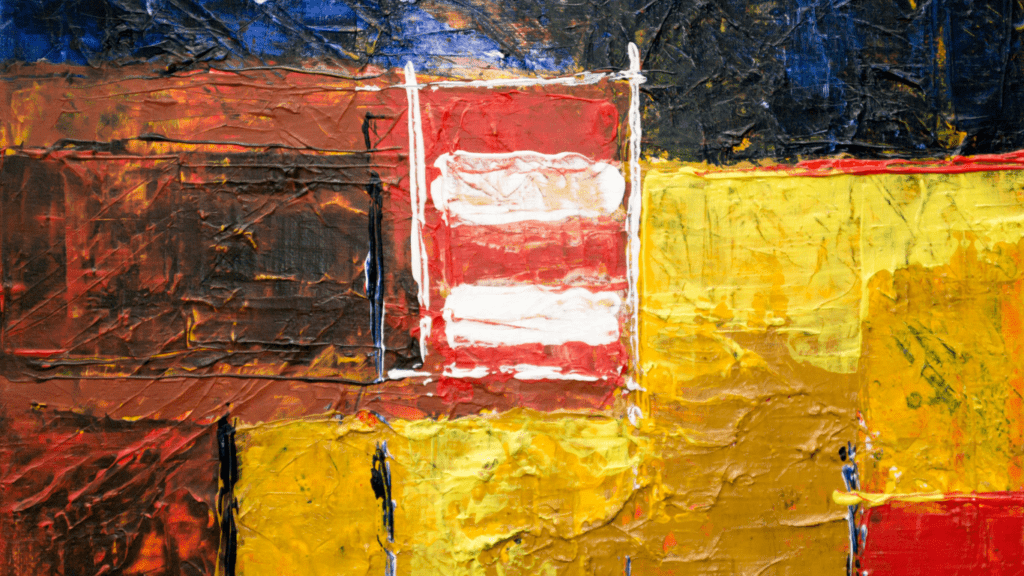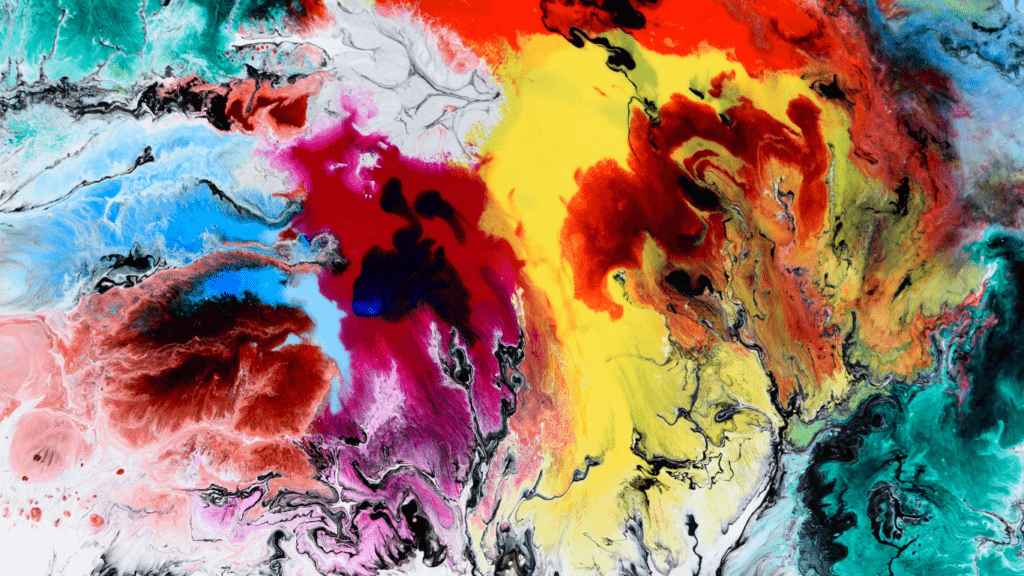Origins Of Abstract Expressionism
Abstract Expressionism emerged from a backdrop of global tension and shifting cultural landscapes in the 1940s. This artistic movement found fertile ground in post-World War II America.
Historical Context
Abstract Expressionism developed amidst the devastation of World War II. This era saw artists seek new ways to express the chaotic and fragmented reality they experienced. The Great Depression and the war’s aftermath influenced American artists to move away from traditional techniques and explore more profound, subconscious themes. The relocation of European artists, including Surrealists, to New York City due to WWII also played a critical role in shaping the movement. New York thus became a global art hub, fostering innovative and experimental artistic expressions.
Key Artists And Influences
Pioneers like Jackson Pollock and Mark Rothko became synonymous with Abstract Expressionism. Pollock’s drip paintings symbolized the movement’s emphasis on spontaneous creation. By using an unorthodox method of dripping and splattering paint, Pollock challenged conventional notions of composition and technique, making each piece a raw and dynamic expression. Rothko, on the other hand, focused on color fields, using large blocks of color to evoke deep emotional responses.
Other significant figures included Willem de Kooning and Franz Kline. De Kooning’s gestural brushstrokes and complex compositions sought to capture the human form’s dynamism, while Kline’s bold, black-and-white abstractions highlighted the power of simplicity and stark contrast.
Surrealism and Expressionism also heavily influenced Abstract Expressionism. While Surrealism’s fascination with the unconscious mind inspired many artists, German Expressionism’s emotive intensity provided a foundation on which they expanded. Together, these movements helped form a unique and enduring artistic language that reshaped 20th-century art.
Defining Characteristics Of Abstract Expressionism

Abstract Expressionism features distinct elements that set it apart from other art movements. The artists focused on individual freedom and spontaneous creation.
Techniques And Styles
Artists in this movement often used vigorous brushstrokes, drips, and splatters to express emotion. They employed methods like action painting and color field painting. Action painting involves energetic gestures, where artists pour or drip paint directly onto the canvas, as seen in Jackson Pollock’s works. Color field painting emphasizes large areas of a single color to evoke an emotional response, a technique exemplified by Mark Rothko’s pieces.
Major Works And Their Impact
Key works like Pollock’s “No. 5, 1948” and Rothko’s “Orange, Red, Yellow” profoundly influenced the art world. Pollock’s chaotic drip technique challenged traditional art concepts, making spontaneity a mainstream technique. Rothko in his turn revolutionized the use of color, impacting countless artists and movements. These works shifted the focus from realistic representation to personal expression.
The Movement’s Influence On Contemporary Art
Abstract Expressionism’s impact permeates today’s art world. From galleries to individual artist practices, its legacy is undeniable.
Shifts In Artistic Perception
Abstract Expressionism revolutionized how art is perceived. It emphasized personal expression over representational accuracy, dramatically altering artistic evaluation criteria. This movement conveyed the artist’s inner emotional landscape rather than depicting external reality, influencing contemporary artists like Jean-Michel Basquiat and Cy Twombly. Their works show the ongoing relevance of prioritizing emotional depth and spontaneous creation over traditional aesthetics.
Abstract Expressionism In Modern Galleries
- Modern galleries showcase Abstract Expressionist works prominently.
- They recognize the movement’s role in redefining artistic boundaries and celebrating innovation.
- Key pieces from Pollock, Rothko, and de Kooning often feature in major collections, emphasizing their enduring value.
- The prominence of these pieces in galleries influences new generations of artists and collectors, underscoring the movement’s lasting impact on the art market and cultural heritage.
Cultural And Social Impact
Abstract Expressionism revolutionized the cultural and social landscape, shaping artistic discourse and public perception in profound ways.
The Role Of Critics And Art Dealers
- Critics and art dealers were instrumental in promoting Abstract Expressionism.
- Clement Greenberg championed artists like Jackson Pollock, framing their work as avant-garde and elevating Pollock to icon status.
- Art dealer Peggy Guggenheim provided financial support and gallery space for emerging artists, enabling their work to reach wider audiences.
These influencers created a cultural narrative that positioned Abstract Expressionism as the pinnacle of contemporary art.
Public Reception And Controversies
Public reception of Abstract Expressionism was mixed. While some embraced its break from tradition, others found its abstraction perplexing. The debate intensified as works like Pollock’s drip paintings garnered both acclaim and scorn. Controversies arose over the perceived elitism of the movement and its accessibility to the general public. Despite the polarized opinions, the movement provoked widespread discussion, underscoring its impactful presence in the cultural sphere.





